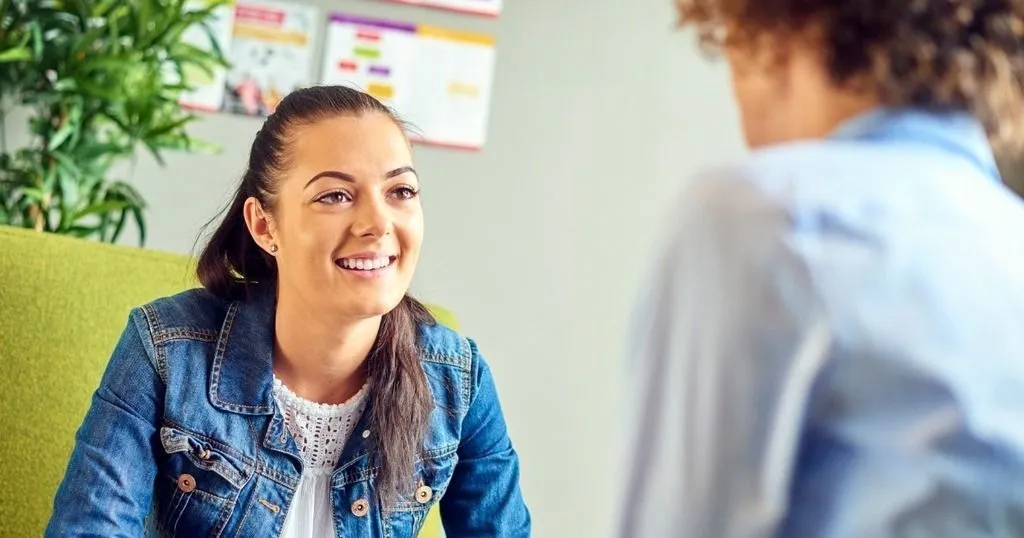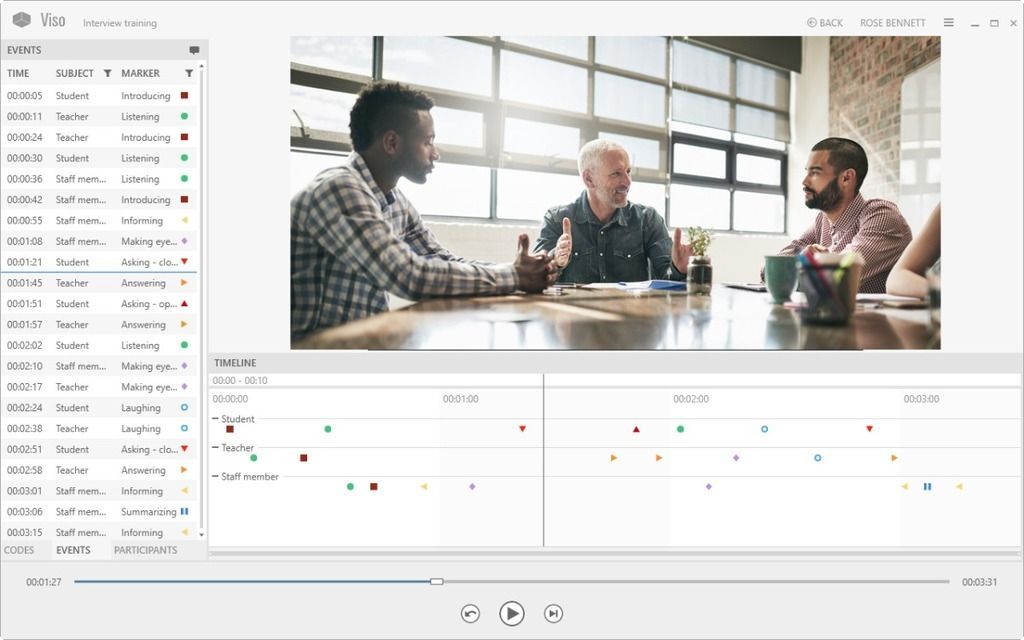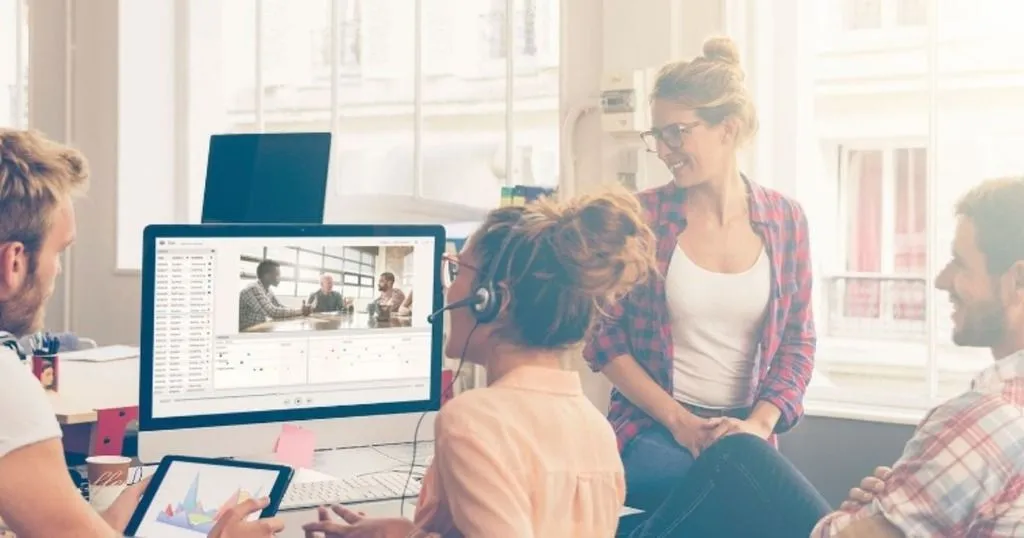Effectiveness of video feedback in education
Did you know that video feedback in education is efficient? This and 5 more reasons why video debriefing in education is effective.
Posted by
Published on
Wed 01 Mar. 2017
Topics
| Behavioral Patterns | Coding Behavior | Coding Schemes | Education | Healthcare | Measuring Behavior | Teamwork | The Observer XT | Video Feedback | Viso | Debriefing |

Discover the transformative impact of video feedback in education. Explore how the use of video and audio recordings has become an essential tool, benefiting both educators and students. Learn why this dynamic approach to feedback is revolutionizing the educational landscape.
Unlocking the power of video feedback in education: 6 compelling reasons
Video feedback in education is increasingly used in education, and continues to prove its effectiveness for both educators and students. By using video and audio recordings in education, students and educators can receive, and benefit from, direct feedback. Let us share 6 reasons why this is beneficial for both teachers and students.
1) Did you know that… Many students experience stress when they have to participate in video feedback sessions, but that support and reassurance helps them overcome this stress?
Two Norwegian researchers, Nilsen and Baerheim, found that some students experienced emotional distress before the start of the course. Their study shows the importance of reassurance and support in the process, and demonstrates the importance of carefully considering the design and execution of such educational programs.
2) Studies have proven that team training in health care improves teamwork processes and can positively impact patient outcomes?
Multi professional teams from a large obstetric collaborative network in the area of the Máxima Medical Center Veldhoven, The Netherlands, received training in teamwork skills. This was accomplished by using the principles of Crew Resource Management (CRM) and Noldus’ Viso video recording and debriefing technology.
Viso video debriefing system
In the morning, all residents received lectures on normal labor and delivery physiology, and on possible emergency obstetric situations. In the afternoon, the residents were divided into two groups. The first group participated in the scenario, while the second group observed the first group from another room using the Viso video debriefing system. The latter group debriefed the former group on medical skills, communication, teamwork and leadership, under the supervision of a communication trainer and a gynecologist. Next, they switched roles and repeated the scenarios.
AV feedback system and educational training
The residents were very enthusiastic about this form of educational training. They felt more equipped to deal with obstetric emergency situations in which they are responsible. The residents reported the use of the AV feedback system as adding great value to the training. Noldus’ technology system is of added value for providing feedback, as it makes the debriefing more effective.
3) Gender influences students’ general communication skills?
Tee Pey Chiau and colleagues from the Universiti Kebangsaan Malaysia investigated video recording feedback in communication and counseling among pharmacy students. Their results clearly show that female students showed significant improvement in general communication after intervention in comparison to the male students.
Since the female students showed more engagement (positive talk, partnership-building, question-asking, and information-giving) compared to the male students, you could say they were better trained for the job. In counseling, knowing the mechanics of counselling is insufficient for being an effective counselor. Personal awareness is critical for knowing when and how to use counseling skills. In software such as Viso, researchers can simply add subjects, making it easy to find gender differences.

4) The same Malaysian research group found that both verbal and video feedback had significant effect on students’ counselling performance?
The benefits of both types of feedback were further supported by the comments from the students. Areas mainly affected were non-verbal communication and the importance of facial expressions, body posture, eye contact, and voice tone. They refer to a Turkish study (see point 5) which shows that video feedback is superior to only verbal feedback.
5) Researchers from the Dokuz Eylul University, one of the biggest universities in Turkey, conclude that verbal feedback alone is less effective compared to feedback based on video-recorded interviews?
Nilgun Ozcakar’s study aimed to investigate whether the use of video recordings is superior to verbal feedback alone in the teaching of clinical skills and the role of student self-assessment on history taking skills and communication skills. Their sessions showed that the overall scores for the group having feedback both verbal and videotaped were higher than the scores of the group having only verbal feedback.
6) In emergency care training situations, using video recordings when giving feedback is a good way for students to develop skills and to understand their own actions?
Together with colleagues from the Faculty of Health and Occupational Studies, University of Gävle, Swedish researcher Anita Nyström designed a study in which 44 undergraduate nursing students participated. She found out that video recordings may cause nervousness at first (and we’re back at number 1 with the Norwegian research team).
However, seeing these same video recordings promotes dialogue and acknowledgement, and it also promotes increased self-knowledge and professional growth. Viso video recording software facilitates sessions in which students can really see what happened and learn from their experiences. The teacher can give feedback using the presenter view in the software.
Nyström reports that all of the students felt that the dialogue with and responses from the teacher in connection with visualized feedback were beneficial: “Watching the video recordings allowed the students to see themselves clearly; they saw what they had done and what they had failed to do, which gave them the opportunity to prepare for their future professional role” explains Nyström in her article.

Noldus developed Viso to facilitate video recordings in educational contexts. This software allows for video recording, easy annotation, and debriefing in an easy to use system.
FREE DEMO VISO: Capture skills training sessions
Request a free demonstration to find out why AV recording tool Viso is the right tool for your educational instutution!
- Easy-to-use solution
- Train and educate, enhance teamwork
- Immediate playback of recordings
References
- Nilsen, S.; Baerheim, A. (2005). Feedback on video recorded consultations in medical teaching: why students loathe and love it – a focus-group based qualitative study. BMC Medical Education, 5 (28).
- Chiau, T.P.; Ali, A.M.; Bakry, M.M.; Azmi, N.; Paraidathatu, T. (2016). Video Recording Feedback in Communication and Counselling Among Pharmacy Students. Is it Better than Verbal Feedback?Indian Journal of Pharmaceutical Education and Research, 50 (2).
- Nyström, A., Pålsson, Y., Hofsten, A., Häggström, E. (2014). Nursing students' experiences of being video-recorded during examination in a fictive emergency care situation. International Journal of Nursing Practice, 20 (5), 540-548.
- Ozcakar N, Mevsim V, Guldal D, Gunvar T, Yildirim E, Sisli Z, et al. (2009). Is the use of videotape recording superior to verbal feedback alone in the teaching of clinical skills?BMC Public Health, 9 (1).
- Maxima Medical Center
Related Posts

Video recording used in psychology

3 debriefing steps to evaluate a training session
